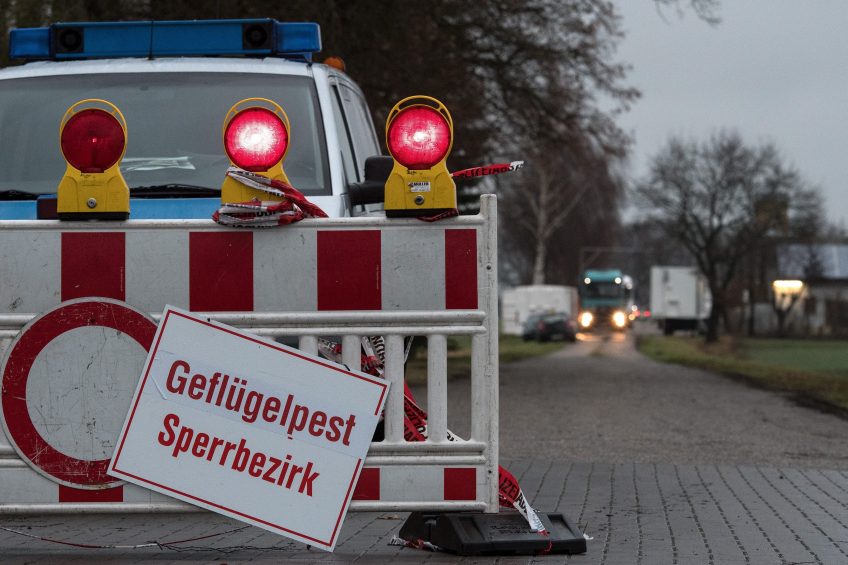Asia and Europe continue to battle HPAI

Outbreaks of highly pathogenic avian influenza are continuing to emerge throughout Europe and Asia.
In quickly evolving developments, Greece has announced its first highly pathogenic H5N8 avian influenza detection in a mute swan near the Evros river delta. In neighbouring Bulgaria, the agriculture ministry reported eight H5 outbreaks on Dec 22: five in backyard poultry, one on a farm, one in captive mallard ducks at a nature park, and one involving a pair of grey herons found dead at a different nature park.
European AI developments
Bulgaria’s H5 outbreaks come in the wake of H5N8 detections in neighbouring countries, including Serbia and Romania. Elsewhere in Europe, several countries that have already reported H5N8 reported new detections, including:
• France has reported highly pathogenic H5N8 on seven more farms, most housing ducks, in Gers and Hautes-Pyrenees department in the hard-hit south-west of the country, according to three separate reports to the OIE. Also, the country’s agriculture ministry in more new reports reported a low-pathogenic H5N8 outbreak from Landes department, outbreaks from south-western departments involving two other low-pathogenic strains (H5N1 and H5N3), and more highly pathogenic H5N8 in a pair of wild ducks found dead in Manche department in the north-west.
• Poland reported four more H5N8 outbreaks at poultry farms, plus another in backyard birds and two more involving wild birds (gulls and a swan). The farm outbreaks occurred in Lubuskie province in the west and Malopolske province in the south and led to the culling of 27,360 birds.
• England and Wales reported more H5N8 in wild birds after recently reporting their first cases, according to a Dec 23 update from the United Kingdom Department for Environment, Food, and Rural Affairs (DEFRA). The latest detections in England involve dead wild widgeons in Somerset and Leicestershire, and the one in Scotland involves a peregrine falcon in the Dumfries and Galloway council area.
• Sweden reported H5N8 in wild birds from three areas in the south-eastern part of the country, according to an OIE report. Species included a crow, a sparrow hawk, and a tufted duck.
• Germany today reported five more outbreaks, four at farms and one in backyard birds. The farm outbreaks all involved turkeys, and killed 861 birds and 50,453 more birds were culled to control the spread of the virus. Four of the events occurred in Lower Saxony state and the other took place in North Rhine-Westphalia state.
Asia update: China, Japan, South Korea, Taiwan
Meanwhile, H5N6 and H7N9 activity sparked actions to curb the viruses in different parts of China, while outbreaks in Japan and South Korea continue to take a toll. India, and Israel have also reported more outbreaks from H5N8 as well as other strains.
In China, the sale of live poultry has been suspended in Suzhou, one of Jiangsu province’s biggest cities following reports of human H7N9 cases. Elsewhere in the country, a large poultry outbreak involving the H5N6 strain in Xinjiang region has led to the culling of more than 55,000 chickens and other poultry.
Other Asian avian flu developments include:
• Japan has reported its seventh avian influenza outbreak at a farm, affecting poultry in Kumamoto prefecture, according to an agriculture ministry report translated and posted by Avian Flu Diary (AFD), an infectious disease news message board. Initial tests revealed the H5 subtype. Japan has been battling H5N6 in wild birds and in a limited number of poultry flocks.
• South Korea has mobilised the military to help cull another 1.6 million birds, according to a Reuters report. The new development would bring the overall culling total to a staggering 26 million birds.
• Taiwan agriculture officials reported four more H5N8 outbreaks at poultry slaughterhouses, according to a Dec 23 report, to the OIE. Of 2,929 susceptible birds at the four facilities, the virus killed 38, and the remaining birds were destroyed. The outbreaks occurred in four different cities and all involved chickens.
• India’s Odisha state has ordered the culling of 2,500 poultry after tests found highly pathogenic H5N1 in crows and chickens that died, Reuters reported today. The outbreak occurred in the village of Keranga. The region experienced a similar outbreak in 2012.
• Israel has reported 17 more H5N8 outbreaks, involving 9 farms—mostly affecting turkeys—and 8 affecting wild birds at nature parks.
Source: CIDRAP












